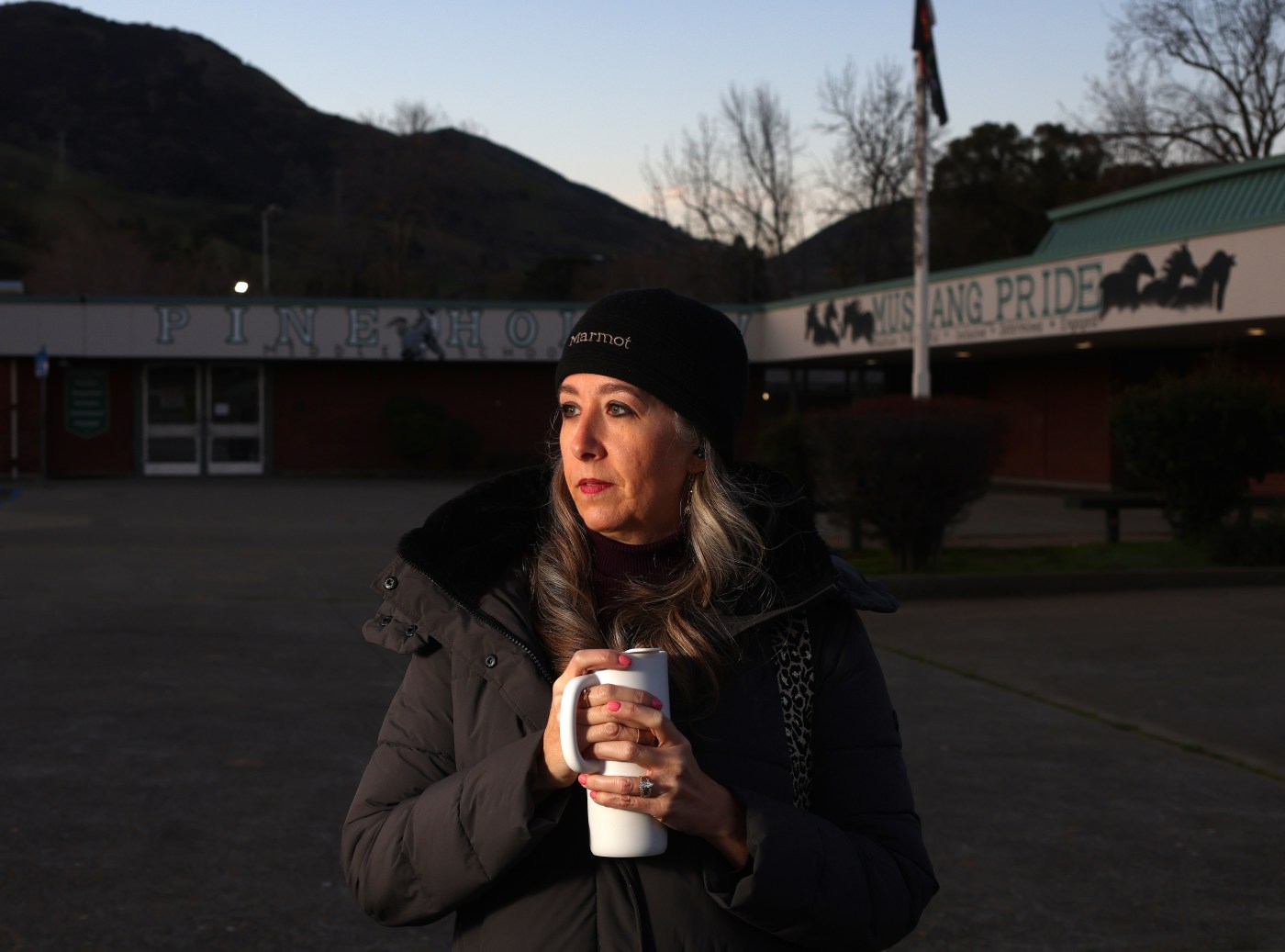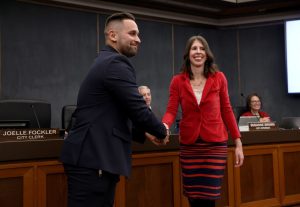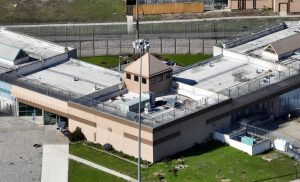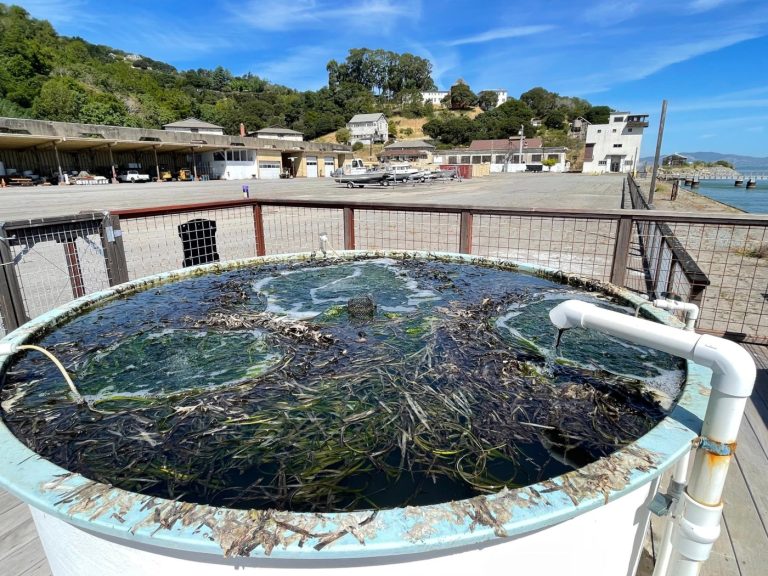CONCORD — Krista Miller can open an app to double check if her husband turned down their “smart” thermostat before leaving home, but the 23-year teacher hasn’t been able to decode the daily temperature inside her Pine Hollow Middle School classroom since last fall.
That’s when the digits on the HVAC system’s display started mirroring her algebra curriculum: an unpredictable variable that could have infinite solutions — or potentially no answer at all.
It all started when Schneider Electric began rolling out its districtwide heating and cooling equipment system — part of a controversial $50 million energy savings project — last February.
In an effort to reduce excess energy consumption and utility costs, Mt. Diablo Unified School District officials quietly awarded the Texas-based multinational company a string of “energy services” agreements to design and build a multiphase construction project to install new ceiling tiles, light fixtures and HVAC systems at every school, which received final approved in March 2023.
As district administrators and watchdogs continue sparring over the merits of the Schneider deal, Miller and other teachers have learned to embrace practical solutions to deal with its consequences.
For one thing, Miller quickly learned to layer up and bring her heavy-duty, fur-lined coat to wear while teaching 7th and 8th graders how to divide polynomials and solve for “x.” When she arrived early Monday morning this week, her classroom was 56 degrees.
“Now everybody’s thermostat is messed up, broken, misprogrammed — whatever word you want to use — in a different way, and everybody gets a different fix,” Miller said in an interview. “Whether it’s blowing air that’s too warm or too cold, that’s taking away from students’ learning, and that’s not an environment they deserve.”
Over at Mt. Diablo High School, Debbie Hickey’s hands turned purple while working inside the office before winter recess. For more than six weeks, the front office manager said several administrative work spaces dipped into 40-degree temperatures — more than 20 degrees colder than the programmed baseline — because the school’s HVAC software mistook the building for vacant and shut off the heat.
Related Articles
Saratoga takes steps toward traffic safety near local schools
‘Stay vigilant’: East Bay schools prepare for ‘unlikely’ ICE raids
Police arrest San Jose teacher suspected of sexually assaulting student
Q&A: What does the U.S. Dept. of Education do and how does that impact California?
Opinion: Why U.S. and China must fund a high school exchange program
Hickey believes the current problems could have been avoided if the district hadn’t rushed into the deal with Schneider Electric.
“I believe that (MDUSD) jumped the gun — we really didn’t have much of an issue with our HVAC until the new system went in,” Hickey said in an interview, wondering if district officials could have saved money if they had pumped the brakes after several teachers, staff members and volunteer oversight officials flagged concerns in recent months. “What are they hiding? Are they just shy to share? I don’t know.”
For months, district officials largely deflected scrutiny over the legality and efficacy of the Schneider Electric’s project — instead lauding its potential to reduce energy consumption on weekends and cut other utility costs. However, Melanie Koslow, the district’s director of maintenance, operations and facilities, openly acknowledged in December that the swath of HVAC control complaints is tied to “unforeseen issues” with Schneider Electric’s programming.
“The intention of the project is not coming through because of the issues that we’re having every single day,” Koslow said during the board’s Dec. 18 meeting, explaining that her department is holding formal, weekly meetings with the company and trying to improve communication with individual school sites. “We feel like maybe (Schneider Electric) should have known this, or (they) should have known that … but we’re trying to respond to the immediate needs that we’re hearing from our school sites, our educators, our office staff about all of that.”
Koslow confirmed that nearly 750 work order calls related to HVAC mechanics — largely involving thermostat controls — were logged between August and December.
Schneider started installing the first HVAC units last February, which were later reprogrammed into its third-party energy management system, a subscription-based service that purported to help the district track utility bills, advise other energy policies and regulate classroom temperatures.
That integration ended teachers’ ability to bump temperatures below 68 degrees or above 72 — a restricted range that the company said was key to allowing its automated in-house technology to achieve the lofty energy savings projections it pitched to the district in 2022.
However, this technical tweak has since prompted a slew of HVAC glitches districtwide, throttling classroom temps without rhyme or reason.
MDUSD teachers have filed more than 90 adverse working condition forms tied to Schneider Electric’s handiwork within the last year, according to Linda Ortega, president of the Mt. Diablo Education Association and teachers union. Ortega said she’s never seen so many complaints in recent memory — when there’s rarely any at all — and the total for the current school year increased by roughly 25% within the last three months.
The grievances claim that many fans run continuously — a default setting that’s simultaneously frozen some rooms like Millers’ into “ice blocks,” while others are needlessly filled with hot air. Some teachers have overheated when air circulation cuts out entirely, while others struggled to hear students’ answers over droning, outdated components that weren’t installed properly. At times, these thermostats also displayed the wrong date and time, showed completely blank screens or had buttons reprogrammed whenever teachers successfully figured out how to override the system.
Meanwhile, MDUSD consumed roughly 15 million kilowatt hours (kWH) of electricity in September — an 80%-100% spike compared to rates measured before Schneider started work in July 2019. While the Measure J-funded project previously promised that MDUSD’s cumulative savings would hit 80% of their annual utility expenditures, the company’s own data reported that the district only saw an initial 7% in energy savings.
After weathering the cold indoors for more than five months, Miller said she’s frustrated that MDUSD maintenance officials still haven’t found a fix, especially since “nobody ever sent us anything” to explain the tech transition, let alone ask for their input or feedback.
“We’re just not being treated as professionals — it’s inhumane that we have no control over the thermostats in our classrooms,” Miller said. “For everybody to have different issues, is this incompetence or ignorance?”
Stephanie Salomone, a second grade teacher at Hidden Valley Elementary, said district leadership failed to openly communicate — or even warn teachers — about a problem they’d known about for months.
“Most people did not feel pain until they came back to school in August last year,” Salomone said. “As they slowly started putting the new systems in every corner of the district, that’s when all the teachers were in an uproar.”
But last February, she started struggling to hear students read aloud or answer math problems over a low, droning hum emanating from the new HVAC system that had been installed next to her desk over the Presidents Day holiday weekend — one of the first eight units installed districtwide.
Salomone lays most of the blame on MDUSD, not Schneider Electric.
“I know that (the district) takes forever to get things done, and I feel like sometimes they do not care about the little man, which is us teachers,” Salomone said. “I just really think that they don’t realize what classrooms are like and what happens inside.”
But Cherise Khaund, MDUSD board vice president, said it is Schneider Electric that needs to be held accountable for an explanation and solution — not the district’s M&O staff. Citing her career as an engineer, she said it’s standard practice for projects of this scale to undergo beta tests, which can fix bugs before new tech is deployed.
“What (Schneider Electric) sold to us was that they are experts in this, that they have done this before in multiple nearby school districts successfully,” Khaund said during the Dec. 18 board meeting. Questioning why the company couldn’t start modifying its system to restore teachers local control of their thermostats, as opposed to addressing ongoing problems with temperature automation, she asked “why was that even the process in the first place coming from them, and why can’t it be reversed? It’s so incredibly unacceptable.”












